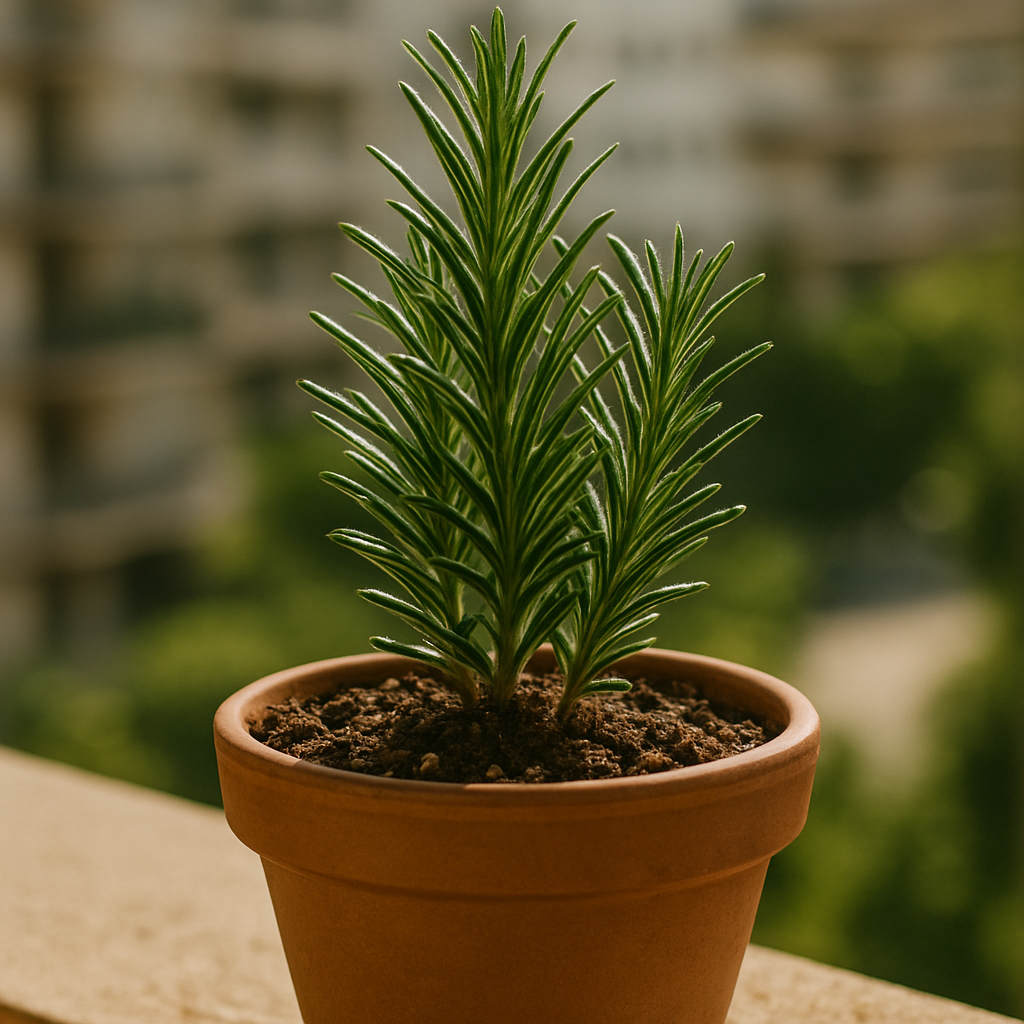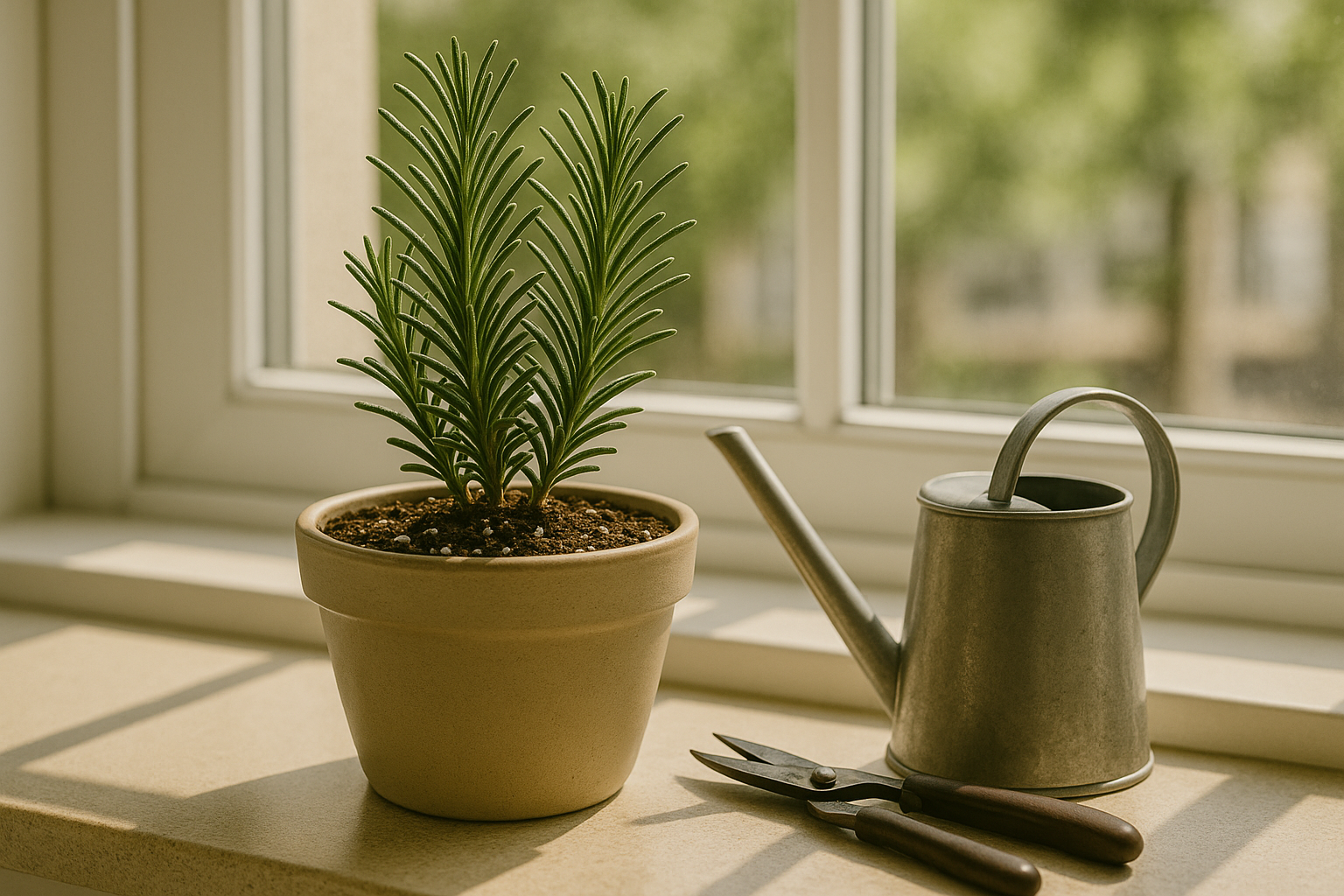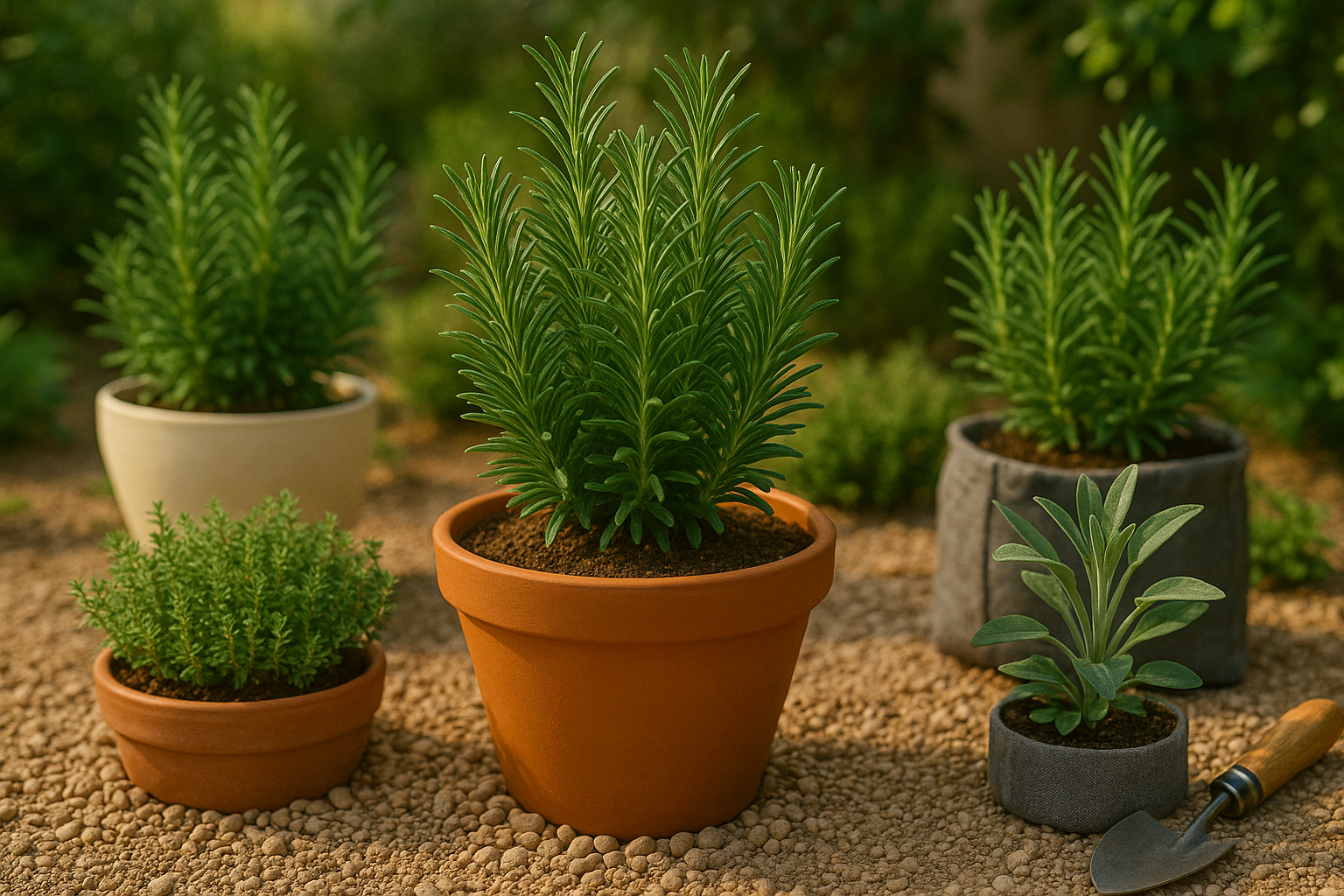Why Grow Rosemary in Containers?

Growing rosemary in containers is a great option for both new and experienced gardeners, offering convenience and versatility that in-ground planting often can’t match. One major advantage is mobility: containers allow you to move your rosemary to catch the best light throughout the seasons or bring it indoors to protect it from frost or extreme heat. This flexibility is especially helpful if you live in an area with unpredictable weather.
Container gardening is also perfect for urban gardeners with limited space. Even a sunny balcony or kitchen window can house a thriving herb garden with the right container. Pest control becomes easier, too; keeping rosemary off the ground helps prevent many soil-dwelling pests, and the contained space reduces competition from other plants.
Rosemary can be tricky to grow in traditional garden beds because it prefers well-draining, slightly alkaline soil—conditions that aren’t always available in your backyard. With containers, you can customize your potting mix to ensure ideal drainage and nutrients, promoting healthy growth. Plus, if your rosemary shows signs of stress, it’s simple to change its environment or repot it as needed.
Finally, container gardening bridges indoor and outdoor spaces, letting you enjoy fresh rosemary flavor and fragrance in your kitchen even during the coldest months. Whether you’re short on space or want more control, growing rosemary in containers helps your plant thrive year-round with less effort.
Essential Features of the Best Rosemary Containers
When choosing a container for growing rosemary, it’s crucial to prioritize good drainage, the right size, and suitable materials to keep your herb thriving.
Rosemary hates soggy roots, so always look for pots with multiple drainage holes at the bottom—this simple feature can prevent root rot and other moisture issues. Aim for a container that’s at least 12 inches wide and deep; rosemary has a bushy above-ground habit and needs room for its root system to spread both sideways and down.
Terracotta pots are a classic choice because they breathe well and help wick away excess moisture, which is ideal if you tend to overwater or live in a humid region. Ceramic containers offer similar breathability but are often heavier, so they’re great for keeping top-heavy rosemary plants stable on windy balconies. Plastic pots are lightweight and budget-friendly; however, they trap more moisture, so ensure you’re not overwatering and that the pot has ample drainage holes. Metal containers, though trendy, can heat up quickly in the sun and risk frying delicate roots, so these are best used with inner liners or in cooler climates.
Here’s a real-world tip: if you’re unsure about drainage, toss a handful of pebbles at the bottom of the pot to encourage water flow.
Ultimately, give your rosemary enough room to grow—cramped roots mean stunted plants, so don’t shy away from repotting into a bigger container as your herb matures. With the right pot, your rosemary will flourish, offering fragrant leaves for your cooking and a beautiful green accent to your space.
Top Container Types for Healthy Rosemary Plants
When it comes to growing healthy rosemary, choosing the right container makes all the difference. Traditional clay or terracotta pots are a classic pick—they allow the soil to breathe and help prevent root rot thanks to their natural porosity. However, these pots dry out quickly, so they’re best if you remember to water consistently.
Window boxes are perfect if you want to grow rosemary on a balcony or windowsill where space is tight. They maximize limited areas and can be moved to follow the sun, but they sometimes drain too fast, so use a high-quality, moisture-retaining soil mix.
Fabric grow bags are a modern solution gaining popularity, especially for gardeners who want robust, well-aerated roots. They encourage good drainage and can be folded up for storage between seasons but may need more frequent watering and support as the plant grows.
If you tend to forget watering, self-watering planters are a lifesaver—they keep soil moist longer with a built-in water reservoir. Just be cautious not to keep the roots too soggy, as rosemary prefers drier conditions.
When choosing a container, consider your available space, whether you want to move your plant, and how much time you can give to watering. For sunny patios, stick with clay or fabric containers; for indoor herb gardens, window boxes or self-watering planters can fit neatly in small spaces.
Whatever option you choose, always make sure your container has excellent drainage holes, as rosemary hates sitting in wet soil.
Drainage, Soil, and Placement Tips
Excellent drainage is essential for rosemary because this Mediterranean herb naturally thrives in rocky, well-drained soils and struggles if its roots stay wet for too long. Overwatering or poorly draining pots can quickly lead to root rot, stunting, or even killing your plant.
To achieve proper drainage in containers, always select pots with multiple pre-drilled drainage holes—avoid decorative cache pots that trap water. You can further boost drainage by adding a layer of coarse gravel or small pebbles at the bottom of the pot before filling it with soil, though the key benefit comes from using a well-draining soil mix.
For container-grown rosemary, use a cactus or succulent potting mix blended with extra coarse sand or perlite. Mix two parts cactus mix with one part perlite or coarse horticultural sand for a fast-draining medium. Avoid standard garden soil or all-purpose potting mixes unless they are amended to become very airy and quick-draining—compacted or moisture-retentive soils are a recipe for root problems.
For added nutrition without sacrificing drainage, blend in a small amount of compost or worm castings, but don’t overdo it, as rosemary doesn’t need rich soil.
Placement Matters, Too
Outdoors, situate your rosemary where it receives at least six to eight hours of direct sunlight daily—a sunny patio or garden bed works well. Indoors, place containers near a south-facing window or under a grow light to ensure the plant gets bright, consistent light. Rotate indoor pots every week or so for even growth, and avoid areas with frequent drafts or temperature swings.
With the right drainage, soil, and light, you’ll help your rosemary thrive season after season.
Caring for Rosemary in Containers

Caring for rosemary in containers is simple, but it does require attention to a few key routines to keep your plant healthy and aromatic. Start with the right watering schedule—rosemary prefers its soil on the drier side since overwatering can lead to root rot. Water deeply only when the top inch of soil feels dry, and be sure to let excess moisture drain away.
For ongoing health and fullness, pinch or trim the tips every few weeks to encourage bushy growth. Use sharp scissors and snip just above a pair of leaves. Fertilize sparingly—about once a month during spring and summer—with a balanced, diluted liquid fertilizer. Too much fertilizer can dull the flavor and aroma of the plant.
Every year or two, repot your rosemary into a slightly larger container with good drainage and fresh potting mix to prevent rootbound stress and keep growth vigorous. As the weather cools in fall, consider moving your rosemary indoors if you live in a region with harsh winters. Place it in a bright, sunny window, and reduce watering since growth will slow down.
In spring, gradually reintroduce the plant to outdoor conditions to prevent shock. Watch for common pests like spider mites and aphids—spray with a gentle soap solution or wipe the leaves with a damp cloth if you notice webbing or sticky residue. Also, keep an eye out for powdery mildew, especially if air circulation around the plant is poor. Remedy this by pruning crowded branches and spacing containers further apart.
By following these routine care steps and adjusting to the seasons, you’ll enjoy robust, flavorful rosemary for cooking or decoration all year round.
Final Tips for Thriving Rosemary Containers
Successful rosemary container gardening hinges on a few essential do’s and don’ts. Do choose a well-draining potting mix and a container with drainage holes—rosemary hates soggy roots and thrives best when its soil dries slightly between waterings.
Don’t overwater; only water when the top inch of soil feels dry. Place containers where rosemary gets at least six hours of sun daily, whether that’s a sunny patio or a bright windowsill.
If your rosemary wilts, check for root rot from overwatering, and trim away mushy roots before repotting in fresh soil. Yellowing leaves often indicate poor drainage, cold shock, or too much fertilizer—cut back on feeding and raise the pot to ensure airflow.
For sluggish growth, try a larger container or shift to a brighter spot to encourage healthy expansion. Pest-wise, keep an eye out for aphids or spider mites and hose them off if necessary.
Don’t be afraid to experiment: terra cotta pots dry out quickly and suit dry-loving rosemary, while self-watering containers reduce missed waterings. Move containers outdoors in warm months, and bring them inside before frost for year-round enjoyment.
By experimenting with placement and containers, you’ll quickly discover what helps your rosemary thrive.
